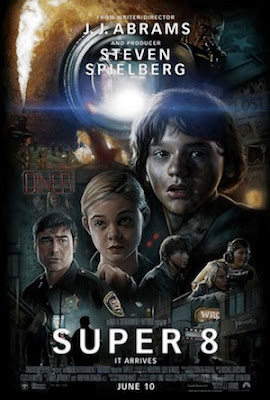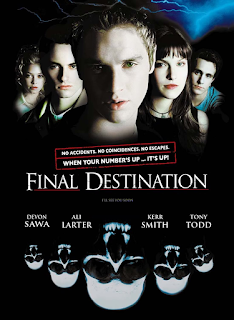The March of the Penguins
Introduction
The blogpost this week for us is to find out the documentary
elements that could be found in the movie March of the Penguins, which is a French
feature-length nature documentary written and directed by Luc Jacquet in year
2005. By that, the goal of this post for me is to study about this movie, watch
it, and get to know about what theory is used in it which showed the semantic
and syntactic approach to genres for the film. Along my study of this film, by
accomplishing my goal, I would also have an attempt to determine the documentary
elements that would be found in film by stating it out in the analysis section
of my post.
Theory Discussion
Poetic
“The poetic mode is particularly adept at opening up the
possibility of alternative forms of knowledge to the straightforward transfer
of information, the prosecution of a particular argument or point of view, or
the presentation of reasoned propositions about problems in need of solution.
This mode stresses mode, tone, and affect much more than displays of knowledge
or acts of persuasion. The rhetorical element remains underdeveloped.” (Bill
Nichols, Introduction to Documentary, pp 103). Began in the modernism era, it
is a way of representing reality via series of fragmented visuals and
subjective impressions, incoherent acts and loose associations. Films of this
mode breaks up time and space into multiple perspectives, denying coherence and
accepting the unconscious, this mode stresses on fragmentation and chooses
ambiguity as a prominent feature. For an example, a fighting scene that lasts
for 10 minutes. It shows reality in a different way or in other words, in a
more stylistic way.
Expository
“Voice-of-God commentary and poetic perspectives sought to
disclose information about the historical world itself and to see that world
afresh, even if these views came to seem romantic and didactic.” (Bill Nichols,
Representing Reality, pp 32-3). A disembodied and authoritative voiceover that
is combined with a series of imageries, all aimed at being descriptive and
informative. Films of this mode address audience directly, providing visible
information in the imagery and unseen information in the voiceover. It is a
classic mode and is now common in TV documentaries. Overall effect of this mode
is objectivity, a direct and transparent representation.
Observational
An observational mode of representation allowed the
filmmaker to record unobtrusively what people did when they were not explicitly
addressing the camera…But the observational mode limited the filmmaker to the
present moment and required a disciplined detachment from the events
themselves. (Bill Nichols, Representing Reality, pp 33). There is no apparent intervention
by the filmmaker in the filmed events. For an instance, there is no
voice-of-god voiceover, no intertitles and no interviews. Films of this mode
observe and record as the events unfold in real time, resulting in long takes
and sound is recorded directly, establishing an intimate relationship with and
a sense of the environment without manipulating and distorting the event, thus
there’re no dramatic nor unusual moments; making films of this mode
significantly known as direct cinema. Overall effect is a neutral and
non-judgemental appeal.
Interactive
“Interactive documentary arose from the desire to make the
filmmaker’s perspective more evident. Interview styles and interventionist
tactics arose, allowing the filmmaker to participate more actively in present
events.” (Bill Nichols, Representing Reality, pp 32-3). The filmmaker’s presence is known to the
audience by ways of the filmmaker interacting with the filmed interviewees
Films of this mode allow the filmmaker’s presence to be felt by the audience
via interviews, posing questions on/off screen as a mediator for interviewees
and audience. His power over the documentary is clearly shown, via questions
posed as well as editing. The overall effect of this mode exposes the process
by which the documentary is made, instead of hiding it like the previous modes.
Objectivity is very much restrained.
Reflexive
“Reflexive documentary arose from a desire to make the
conventions of representations themselves more apparent and to challenge the
impression of reality which the other three modes normally conveyed
unproblematic.” (Bill Nichols, Representing Reality, pp 32-3). The filmmaker
exposes the techniques employed for representation, challenging the
documentary’s means of revealing the truth Films of this mode focuses on film
properties and filmmaking process, reminding and informing audience, besides
the represented issue, that they are also watching a film that is attempting to
represent reality. Overall effect of this mode is lack of objectivity which does
not necessarily compromise the impact of documentary but instead, provide more
valuable views of the issue at hand.
Performative
“Performative doc. (1980s – 90s): stress subjective aspects
of a classically objective discourse. - Possible limitations: loss of
referential emphasis may relegate such films to the avant-garde; ‘excessive’
use of style.” Bill Nichols, Blurred Boundaries, pp 95 direct reference to the
issue at hand is marginalized while poetic & expressive aspects of film are
emphasized. The world is not captured like other modes traditionally do but
instead represent it indirectly Films of this mode evoke mood/atmosphere found
in fiction films, representing of subject matter stylistically, evocative and
expressively. Overall effect of this mode is lack of objectivity, aimed at
encouraging audience to experience and feel the events while making audience
question the integrity and accuracy of the filmed events
Synopsis
This film is about the journal of the Emperor Penguins. So,
at the end of each Antarctic summer, the emperor penguins of the South Pole
journey to their traditional breeding grounds in a fascinating mating ritual
that is captured in this documentary by intrepid filmmaker Luc Jacquet. The
journey across frozen tundra proves to be the simplest part of the ritual, as
after the egg is hatched, the female must delicately transfer it to the male
and make her way back to the distant sea which had a distance of 70 miles far
from the breeding grounds to nourish herself and bring back food to her new
born chick.
Analysis
The type of documentary in this film is Expository.
Throughout the whole movie, there is Voice-of-God or what we call narration.
Expository documentaries try to be objective. It is mostly scripted,
descriptive and more idealistic. The stylistic part of the film is due to the
tone of narrator. They reveals the historic world, giving us an interpretation
of that part of the world. Also, quick transition editing were used in the
film. It is used to portray the events of the penguins life. The colours are
kept top the original ones of Antartica, to make the documentary even more
realistics. The documentary is entirely in the third person, with no interviews
at all throughout the film. Again, this is due to the director's vision of an uninterupted
portrayal of the Emperor penguins. However, it should be noted that in the
other versions that have been translated, the penguins themselves are given
voices that portray their thoughts. There was a constant score going throughout
the film. The music became quiet when the narrator began speaking, and when the
penguins were making noise.
Conclusion
March of the Penguins encompasses
principles of expository documentaries by featuring the voice-of-God, using
evidentiary editing and generalising a particular situation. It had taught me
that what need to be concerned when doing a documentary type film. Although it
is quite boring for me but I think that it is worth for me to learn one or two
things within the film.



Comments
Post a Comment